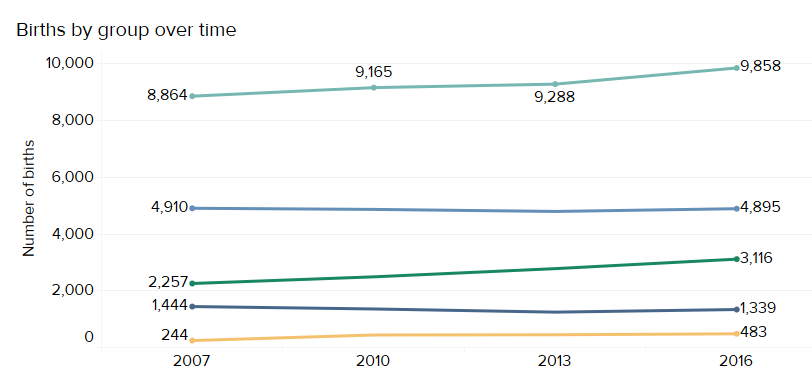Why has enrollment in D.C.’s public schools grown? This blog post examines births and cohorts staying in schools at higher rates over time as two drivers of enrollment growth to follow up on the D.C. Policy Center report, Will Children of Millennials Become Future Public School Students?.
Enrollment in D.C. traditional public and public charter schools grew by about 8,000 students (or 13 percent) in kindergarten through grade 12 from 2006-07 to 2016-17.[1] Interestingly, the population aged 5 to 17 started to increase in 2012, and public school[2] enrollment increased two years earlier. This could be the result of policy changes, such as more kindergarteners staying in public schools after access to free pre-kindergarten was expanded in 2008.
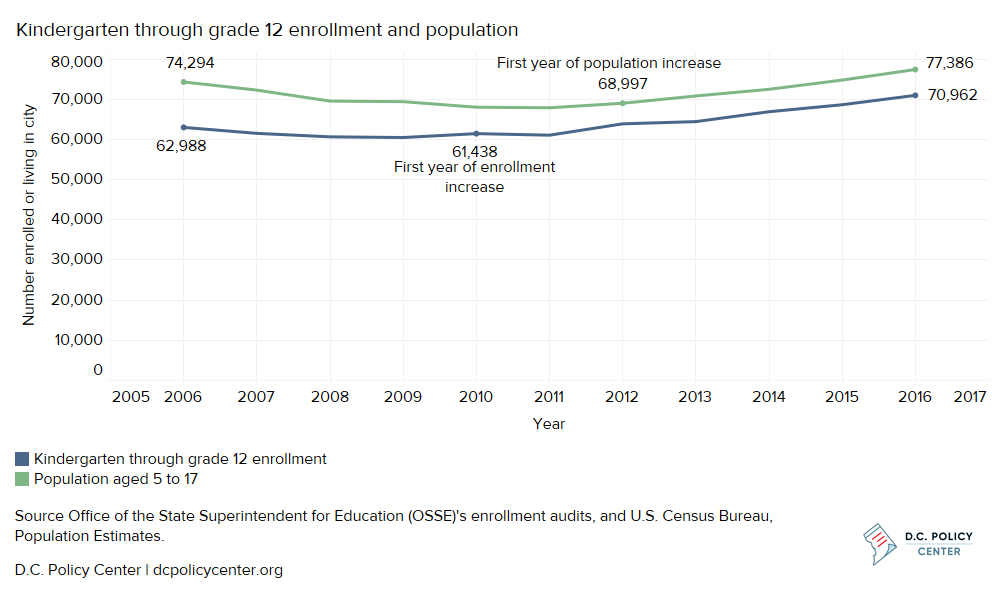
Growth in enrollment in D.C.’s public schools has two drivers. First, there are higher numbers of school-age children: the population aged 5 to 17 grew by about 3,000 children (4 percent) over the same period. Second, a higher percentage of school-age children are attending public schools: estimated public school attendance rates among that age group is up to 92 percent in 2016-17 from 85 percent in 2007-08.[3]
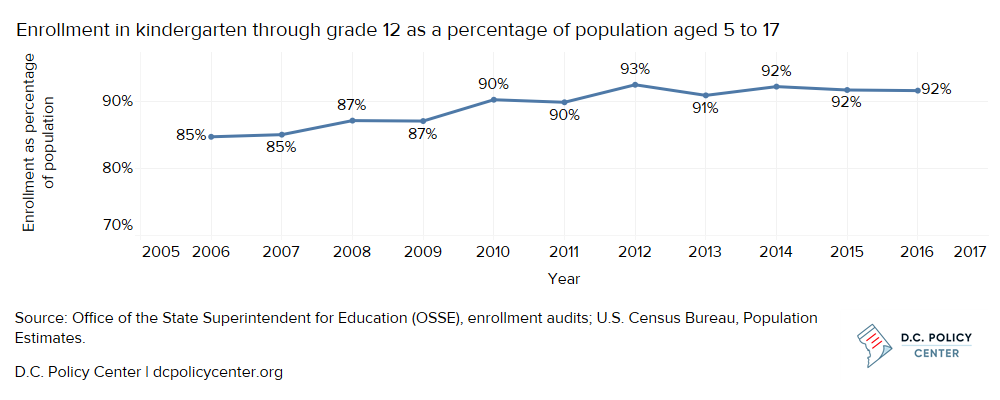
There are more school-age children
There are higher numbers of school-age children in the District in part because there are more children born to D.C. mothers. Births have increased by 11 percent between 2007 and 2016, and there were 994 more births per year in 2016 compared to 2007. Most of this growth is driven by an increase in births of children born to white mothers (859 more births per year), while births of children born to Latino or African American mothers combined per year have decreased since 2007.[4]
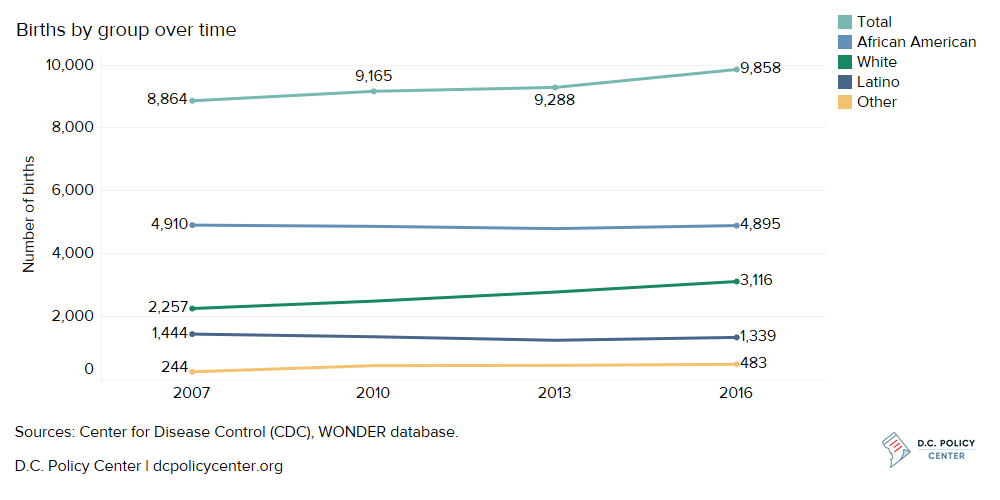
More families choosing public schools
Also influencing these enrollment trends, higher proportions of children born to D.C. mothers stay in the city and then enroll in its public schools after birth, especially in early and elementary grades. As a measure for early grades, 73 percent of the cohort born in 1998 enrolled in kindergarten five years later, which increased to 80 percent of the cohort born in 2010 (these calculations are net of in- and out-migration). Looking at elementary grades, 61 percent of the cohort born in 1998 enrolled in grade 5 ten years later compared to 69 percent of the cohort born in 2007. The change in students staying through grade 8 is smaller, and there aren’t any cohorts to compare to the cohort born in 1998 who stayed through grade 12 yet. 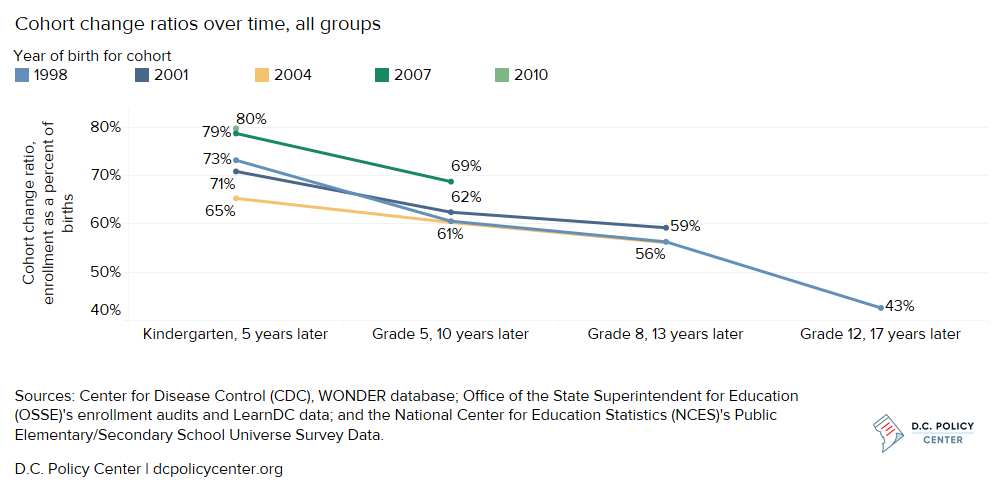
The District actually retains more students in earlier grades than other similar cities, with 73 percent of D.C.’s 1998 cohort still in the city’s public schools for kindergarten. Comparing D.C. to Boston, Denver, New Orleans, and Oakland – four other cities identified as having high degree of public school choice[5], high population growth from 2000 to 2016, and consistent city boundaries – shows that D.C.’s overall pattern is not an outlier, and it is very similar to that of Oakland.
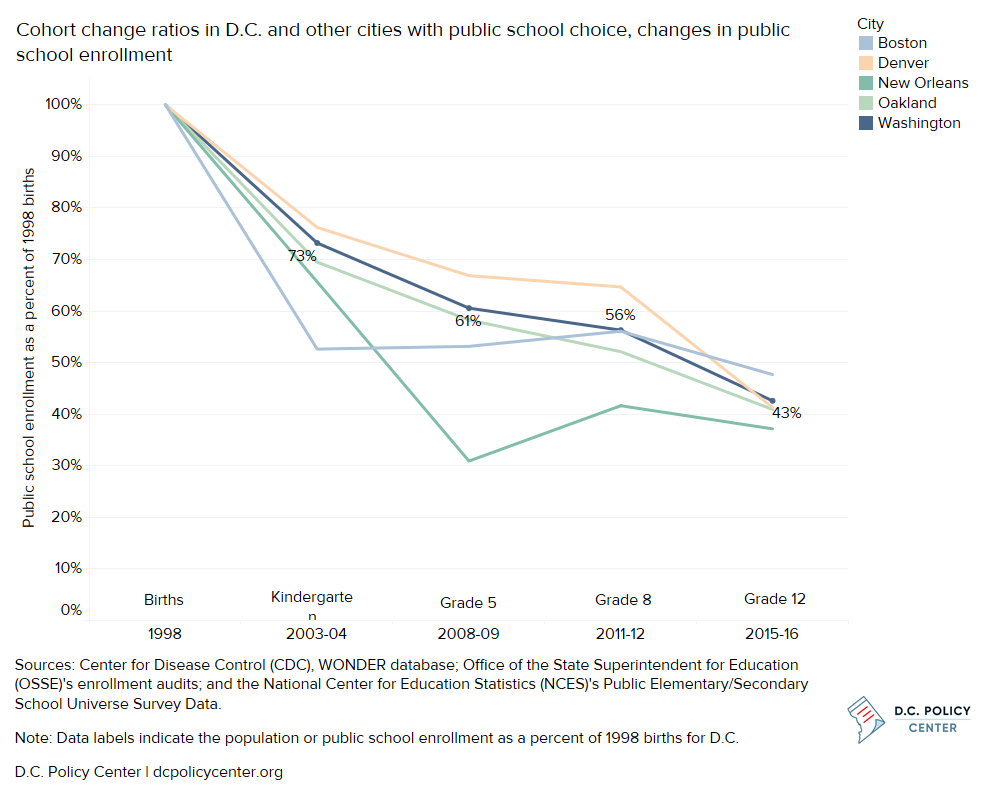
Which groups are driving these increases for D.C. in early grades? From 1998 to 2010, the percentage of cohorts enrolling in kindergarten after birth has increased by 18 percentage points for African American children, more than other groups. African American children also comprise the majority of those born in D.C.: 71 percent of births in 1998 and 53 percent of births in 2010.[6] For these same cohorts born in 1998 and 2010, the percentage of white children enrolling in kindergarten increased by 12 percentage points. However, births of white children are a smaller percentage of the total: they represented 17 percent of births in 1998 and 27 percent of births in 2010.[7]
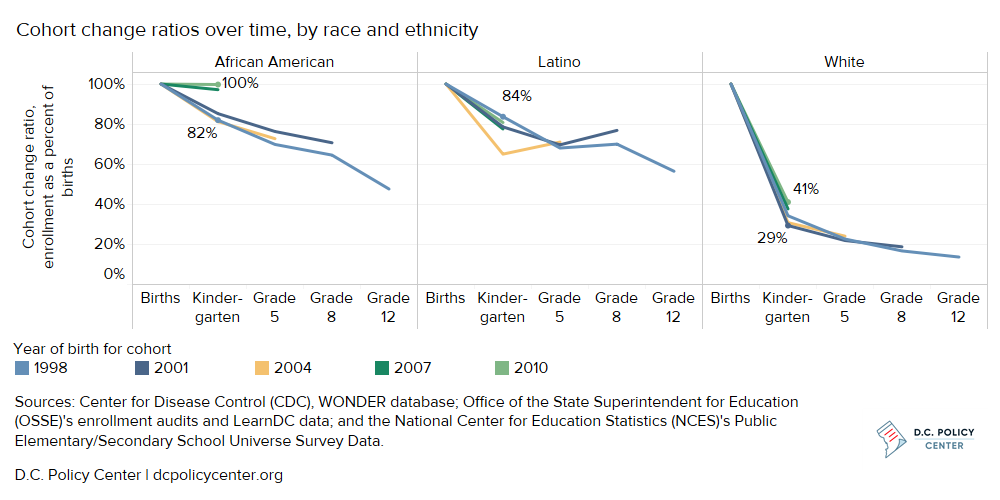
In addition to more students enrolling in early grades, the percentage of students transitioning between upper grade bands has increased as well. Between elementary and middle school, 95 percent of grade 5 students enrolled in grade 8 three years later in recent years, up two percentage points from the 1998 cohort. Between middle and high school, 79 percent of grade 8 students continued to grade 12 in recent years, up three percentage points from the 1998 cohort.
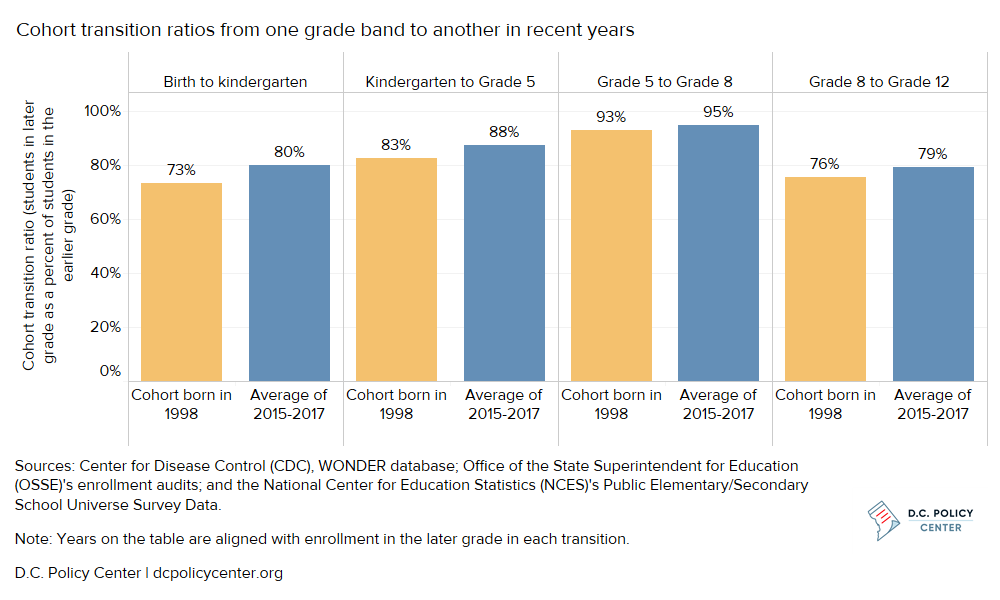
Summary
These trends indicate that D.C.’s public school enrollment will continue to increase in the coming years. Births are up by a thousand per year compared to 10 years ago. More families are staying in the city and choosing public schools for their children, especially in early grades. The questions of what enrollment growth will look like by grade band and location will be explored in future posts.
Additional information
Click here to read the full report, download the report as a PDF, or access the data and methodology.
Notes
[1] Enrollment in pre-kindergarten increased by 6,400 students over this same period, but has been excluded because the Pre-K Enhancement Act of 2008 dramatically expanded access to these grades. The expansion of pre-kindergarten may have led to higher enrollment in kindergarten in 2010 from children who stayed in public schools, and therefore increases in overall enrollment.
[2] Here and throughout, public schools include both traditional public and public charter schools.
[3] The American Community Survey (ACS) estimates show different results for the percentage of the school-age population that attends private school, which would presumably be close to the percentage of students living in the city and not attending public schools. For example, the ACS estimate for the percent of the population enrolled in private school in 2016 is 11 percent, compared to around 8 percent in this analysis. This is due to a different data source for enrollment and large margins of error (up to 30 and 40 percent of the ACS estimates in some cases).
[4] Births to African American mothers do represent half of all births.
[5] Campbell, C., Heyward, G., & Gross, B. (2017). Stepping Up: How Are American Cities Delivering on the Promise of Public School Choice? Seattle, WA: Center for Reinventing Public Education. Retrieved from https://www.crpe.org/publications/stepping-up-american-cities-public-school-choice
[6] Centers for Disease Control and Prevention. (2016). CDC WONDER database. Atlanta, Georgia: CDC. Retrieved from https://wonder.cdc.gov/
[7] Centers for Disease Control and Prevention. (2016). CDC WONDER database. Atlanta, Georgia: CDC. Retrieved from https://wonder.cdc.gov/
